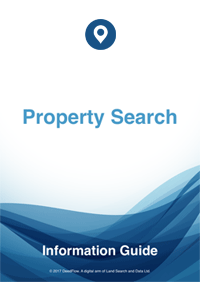Restrictive Covenants
Contents
Overview
A Restrictive Covenant is a contractual agreement between a vendor and purchaser which restricts the purchaser’s use of the property in a particular way, to the benefit of the property.
Where to Find Restrictive Covenants
Restrictive Covenants are created in Deeds drawn by solicitors. The salient features of the Covenants are copied by the Land Registry into the Title Register, and parcels of land within a property being purchased, that are so affected, are illustrated in the Title Plan either with coloured tints, coloured hatchings or coloured edging.
Section C of the Title Register contains the Covenant details. Some properties have very lengthy Restrictive Covenant details and in such cases the Land Registry may only briefly refer to them in the body of the Title Register, and instead make a file note to the effect that a (digital) copy has been made. Such a document would be available to purchase as an Associated Document. Where lengthy covenants are shown in the Title Register, it is normal for them to be placed in a Schedule of Covenants, that appear at the end of the C Section of the Register.
Run with the Land
Restrictive Covenants run with the land, i.e. when the property is sold they bind the new purchaser in the same way that they bound the vendor. They are created so as to benefit the property in some way, which is why they continue to operate even though the ownership changes.
Breach of a Restrictive Covenant
Restrictive Covenants that are breached can give rise to a claim for damages and an injunction to ensure that the purchaser upholds it in future. This is so notwithstanding the breach was accidental. Restrictive Covenants that restrict the use of land for commercial development, e.g., may result in any development, no matter how far it has proceeded, to be demolished and the land put back to its prior condition.
Obsolete Restrictive Covenants
A Restrictive Covenant may become obsolete, in which case it is not enforceable. To establish a Covenant as being obsolete the following three conditions mush exist:
- The Covenants must not be personal in nature.
- They must benefit the land rather than individuals.
- The Covenants must “touch and concern” the property, meaning that they must have a direct effect on the way in which the property is used, or in some way affects its value.
Over time, it is conceivable that the original purpose of the Covenant is no longer of benefit to the property and is even ruinous to it.
How to Remove or to Vary a Restrictive Covenant
There are four steps that should be taken in order to remove or vary a Restrictive Covenant:
1. Look through the Land Registry Title Register, Title Plan and Associated Documents, and read the Covenant details. The wording of the Covenants is usually such as to leave no doubt as to its true intent, and from this you can fathom whether there is a breach of the Covenant.
One of the main factors you will be looking for is whether or not the developer who created the Covenants is still in existence and that the benefit of the Covenant has not been passed on to another company. Also, it may sometimes be the case that there is no reference to the Covenant at all, e.g. where it was created at a later date and has not been registered. Lack of registration may cause the Covenant not to be binding. Alternatively, you may discover that the Covenant was a Personal Covenant. Personal Covenants do not run with the land and are not binding on future purchasers, unless the new purchaser has entered into a similar Covenant.
Person Covenants are shown in the B section of the Title Register, rather than the C section, so this will help in identifying the type of Covenant.
While reading through the documents you should look to see if there is a Deed of Variation or a Deed of Release relating to the Covenant. Copies of these can be obtain by applying for an Associated Documents search.
2. Where you are unsure as to whether a Restrictive Covenant remains valid you may be able to obtain indemnity insurance.
3. Following the above steps you should consider writing to the beneficiary of the Covenant and should clearly state your case, i.e. why you think the Covenant is obsolete or why you think it should be varied. You should be prepared to pay compensation to the beneficiary.
4. If all else fails then you will need to apply to the Upper Tribunal, who have power to vary or discharge the Covenant on terms that you pay compensation. The award of compensation will usually amount to about 30% of the increase in land value attributable to any proposed development you have in mind.
Title Register
The Land Registry Title Register holds data relating to the property ownership, purchase price, mortgage, tenure, covenants, rights of way, leases and class of title.
£19.95Title Plan
The Title Plan shows an outline of the property and its immediate neighbourhood, and uses colours to identify rights of way, general boundaries and land affected by covenants.
£19.95Associated Documents
Deeds creating Restrictions, Covenants, Easements, etc. are often kept digitally by the Land Registry and made available for sale due to their invaluable detail and content to assist in further understanding the Restrictions, etc.
£29.95


